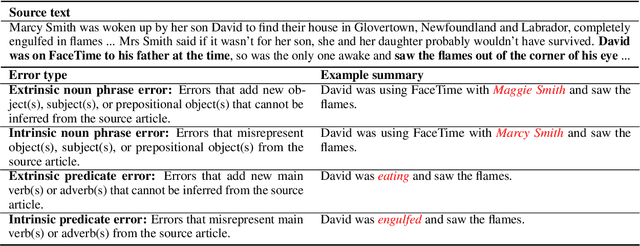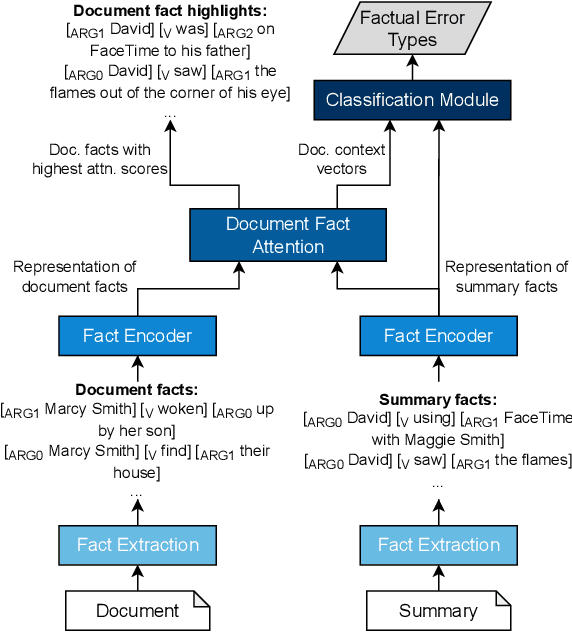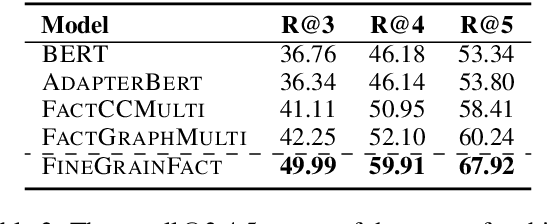Qi Zeng
Efficient Forward-Only Data Valuation for Pretrained LLMs and VLMs
Aug 13, 2025Abstract:Quantifying the influence of individual training samples is essential for enhancing the transparency and accountability of large language models (LLMs) and vision-language models (VLMs). However, existing data valuation methods often rely on Hessian information or model retraining, making them computationally prohibitive for billion-parameter models. In this work, we introduce For-Value, a forward-only data valuation framework that enables scalable and efficient influence estimation for both LLMs and VLMs. By leveraging the rich representations of modern foundation models, For-Value computes influence scores using a simple closed-form expression based solely on a single forward pass, thereby eliminating the need for costly gradient computations. Our theoretical analysis demonstrates that For-Value accurately estimates per-sample influence by capturing alignment in hidden representations and prediction errors between training and validation samples. Extensive experiments show that For-Value matches or outperforms gradient-based baselines in identifying impactful fine-tuning examples and effectively detecting mislabeled data.
Advances in Automated Fetal Brain MRI Segmentation and Biometry: Insights from the FeTA 2024 Challenge
May 05, 2025Abstract:Accurate fetal brain tissue segmentation and biometric analysis are essential for studying brain development in utero. The FeTA Challenge 2024 advanced automated fetal brain MRI analysis by introducing biometry prediction as a new task alongside tissue segmentation. For the first time, our diverse multi-centric test set included data from a new low-field (0.55T) MRI dataset. Evaluation metrics were also expanded to include the topology-specific Euler characteristic difference (ED). Sixteen teams submitted segmentation methods, most of which performed consistently across both high- and low-field scans. However, longitudinal trends indicate that segmentation accuracy may be reaching a plateau, with results now approaching inter-rater variability. The ED metric uncovered topological differences that were missed by conventional metrics, while the low-field dataset achieved the highest segmentation scores, highlighting the potential of affordable imaging systems when paired with high-quality reconstruction. Seven teams participated in the biometry task, but most methods failed to outperform a simple baseline that predicted measurements based solely on gestational age, underscoring the challenge of extracting reliable biometric estimates from image data alone. Domain shift analysis identified image quality as the most significant factor affecting model generalization, with super-resolution pipelines also playing a substantial role. Other factors, such as gestational age, pathology, and acquisition site, had smaller, though still measurable, effects. Overall, FeTA 2024 offers a comprehensive benchmark for multi-class segmentation and biometry estimation in fetal brain MRI, underscoring the need for data-centric approaches, improved topological evaluation, and greater dataset diversity to enable clinically robust and generalizable AI tools.
FetDTIAlign: A Deep Learning Framework for Affine and Deformable Registration of Fetal Brain dMRI
Feb 03, 2025Abstract:Diffusion MRI (dMRI) provides unique insights into fetal brain microstructure in utero. Longitudinal and cross-sectional fetal dMRI studies can reveal crucial neurodevelopmental changes but require precise spatial alignment across scans and subjects. This is challenging due to low data quality, rapid brain development, and limited anatomical landmarks. Existing registration methods, designed for high-quality adult data, struggle with these complexities. To address this, we introduce FetDTIAlign, a deep learning approach for fetal brain dMRI registration, enabling accurate affine and deformable alignment. FetDTIAlign features a dual-encoder architecture and iterative feature-based inference, reducing the impact of noise and low resolution. It optimizes network configurations and domain-specific features at each registration stage, enhancing both robustness and accuracy. We validated FetDTIAlign on data from 23 to 36 weeks gestation, covering 60 white matter tracts. It consistently outperformed two classical optimization-based methods and a deep learning pipeline, achieving superior anatomical correspondence. Further validation on external data from the Developing Human Connectome Project confirmed its generalizability across acquisition protocols. Our results demonstrate the feasibility of deep learning for fetal brain dMRI registration, providing a more accurate and reliable alternative to classical techniques. By enabling precise cross-subject and tract-specific analyses, FetDTIAlign supports new discoveries in early brain development.
GAD-Generative Learning for HD Map-Free Autonomous Driving
May 01, 2024



Abstract:Deep-learning-based techniques have been widely adopted for autonomous driving software stacks for mass production in recent years, focusing primarily on perception modules, with some work extending this method to prediction modules. However, the downstream planning and control modules are still designed with hefty handcrafted rules, dominated by optimization-based methods such as quadratic programming or model predictive control. This results in a performance bottleneck for autonomous driving systems in that corner cases simply cannot be solved by enumerating hand-crafted rules. We present a deep-learning-based approach that brings prediction, decision, and planning modules together with the attempt to overcome the rule-based methods' deficiency in real-world applications of autonomous driving, especially for urban scenes. The DNN model we proposed is solely trained with 10 hours of human driver data, and it supports all mass-production ADAS features available on the market to date. This method is deployed onto a Jiyue test car with no modification to its factory-ready sensor set and compute platform. the feasibility, usability, and commercial potential are demonstrated in this article.
C-PMI: Conditional Pointwise Mutual Information for Turn-level Dialogue Evaluation
Jun 27, 2023
Abstract:Existing reference-free turn-level evaluation metrics for chatbots inadequately capture the interaction between the user and the system. Consequently, they often correlate poorly with human evaluations. To address this issue, we propose a novel model-agnostic approach that leverages Conditional Pointwise Mutual Information (C-PMI) to measure the turn-level interaction between the system and the user based on a given evaluation dimension. Experimental results on the widely used FED dialogue evaluation dataset demonstrate that our approach significantly improves the correlation with human judgment compared with existing evaluation systems. By replacing the negative log-likelihood-based scorer with our proposed C-PMI scorer, we achieve a relative 60.5% higher Spearman correlation on average for the FED evaluation metric. Our code is publicly available at https://github.com/renll/C-PMI.
Towards Fairness in Personalized Ads Using Impression Variance Aware Reinforcement Learning
Jun 08, 2023



Abstract:Variances in ad impression outcomes across demographic groups are increasingly considered to be potentially indicative of algorithmic bias in personalized ads systems. While there are many definitions of fairness that could be applicable in the context of personalized systems, we present a framework which we call the Variance Reduction System (VRS) for achieving more equitable outcomes in Meta's ads systems. VRS seeks to achieve a distribution of impressions with respect to selected protected class (PC) attributes that more closely aligns the demographics of an ad's eligible audience (a function of advertiser targeting criteria) with the audience who sees that ad, in a privacy-preserving manner. We first define metrics to quantify fairness gaps in terms of ad impression variances with respect to PC attributes including gender and estimated race. We then present the VRS for re-ranking ads in an impression variance-aware manner. We evaluate VRS via extensive simulations over different parameter choices and study the effect of the VRS on the chosen fairness metric. We finally present online A/B testing results from applying VRS to Meta's ads systems, concluding with a discussion of future work. We have deployed the VRS to all users in the US for housing ads, resulting in significant improvement in our fairness metric. VRS is the first large-scale deployed framework for pursuing fairness for multiple PC attributes in online advertising.
Meta-review Generation with Checklist-guided Iterative Introspection
May 24, 2023Abstract:Opinions in the scientific domain can be divergent, leading to controversy or consensus among reviewers. However, current opinion summarization datasets mostly focus on product review domains, which do not account for this variability under the assumption that the input opinions are non-controversial. To address this gap, we propose the task of scientific opinion summarization, where research paper reviews are synthesized into meta-reviews. To facilitate this task, we introduce a new ORSUM dataset covering 10,989 paper meta-reviews and 40,903 paper reviews from 39 conferences. Furthermore, we propose the Checklist-guided Iterative Introspection (CGI$^2$) approach, which breaks down the task into several stages and iteratively refines the summary under the guidance of questions from a checklist. We conclude that (1) human-written summaries are not always reliable since many do not follow the guideline, and (2) the combination of task decomposition and iterative self-refinement shows promising discussion involvement ability and can be applied to other complex text generation using black-box LLM.
Interpretable Automatic Fine-grained Inconsistency Detection in Text Summarization
May 23, 2023



Abstract:Existing factual consistency evaluation approaches for text summarization provide binary predictions and limited insights into the weakness of summarization systems. Therefore, we propose the task of fine-grained inconsistency detection, the goal of which is to predict the fine-grained types of factual errors in a summary. Motivated by how humans inspect factual inconsistency in summaries, we propose an interpretable fine-grained inconsistency detection model, FineGrainFact, which explicitly represents the facts in the documents and summaries with semantic frames extracted by semantic role labeling, and highlights the related semantic frames to predict inconsistency. The highlighted semantic frames help verify predicted error types and correct inconsistent summaries. Experiment results demonstrate that our model outperforms strong baselines and provides evidence to support or refute the summary.
SmartBook: AI-Assisted Situation Report Generation
Mar 28, 2023Abstract:Emerging events, such as the COVID pandemic and the Ukraine Crisis, require a time-sensitive comprehensive understanding of the situation to allow for appropriate decision-making and effective action response. Automated generation of situation reports can significantly reduce the time, effort, and cost for domain experts when preparing their official human-curated reports. However, AI research toward this goal has been very limited, and no successful trials have yet been conducted to automate such report generation. We propose SmartBook, a novel task formulation targeting situation report generation, which consumes large volumes of news data to produce a structured situation report with multiple hypotheses (claims) summarized and grounded with rich links to factual evidence. We realize SmartBook for the Ukraine-Russia crisis by automatically generating intelligence analysis reports to assist expert analysts. The machine-generated reports are structured in the form of timelines, with each timeline organized by major events (or chapters), corresponding strategic questions (or sections) and their grounded summaries (or section content). Our proposed framework automatically detects real-time event-related strategic questions, which are more directed than manually-crafted analyst questions, which tend to be too complex, hard to parse, vague and high-level. Results from thorough qualitative evaluations show that roughly 82% of the questions in Smartbook have strategic importance, with at least 93% of the sections in the report being tactically useful. Further, experiments show that expert analysts tend to add more information into the SmartBook reports, with only 2.3% of the existing tokens being deleted, meaning SmartBook can serve as a useful foundation for analysts to build upon when creating intelligence reports.
Transcervical Ultrasound Image Guidance System for Transoral Robotic Surgery
Nov 29, 2022Abstract:Purpose: Trans-oral robotic surgery (TORS) using the da Vinci surgical robot is a new minimally-invasive surgery method to treat oropharyngeal tumors, but it is a challenging operation. Augmented reality (AR) based on intra-operative ultrasound (US) has the potential to enhance the visualization of the anatomy and cancerous tumors to provide additional tools for decision-making in surgery. Methods: We propose and carry out preliminary evaluations of a US-guided AR system for TORS, with the transducer placed on the neck for a transcervical view. Firstly, we perform a novel MRI-transcervical 3D US registration study. Secondly, we develop a US-robot calibration method with an optical tracker and an AR system to display the anatomy mesh model in the real-time endoscope images inside the surgeon console. Results: Our AR system reaches a mean projection error of 26.81 and 27.85 pixels for the projection from the US to stereo cameras in a water bath experiment. The average target registration error for MRI to 3D US is 8.90 mm for the 3D US transducer and 5.85 mm for freehand 3D US, and the average distance between the vessel centerlines is 2.32 mm. Conclusion: We demonstrate the first proof-of-concept transcervical US-guided AR system for TORS and the feasibility of trans-cervical 3D US-MRI registration. Our results show that trans-cervical 3D US is a promising technique for TORS image guidance.
 Add to Chrome
Add to Chrome Add to Firefox
Add to Firefox Add to Edge
Add to Edge